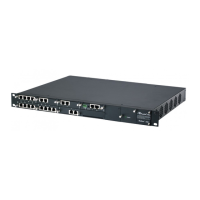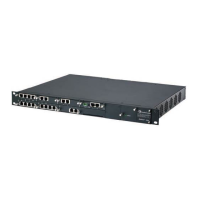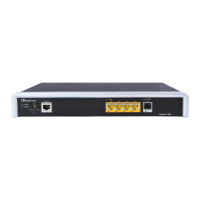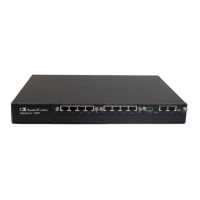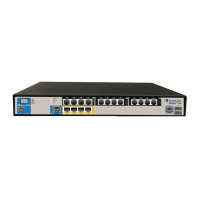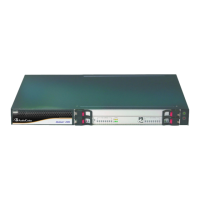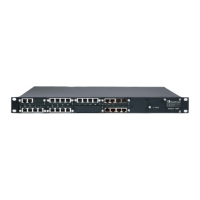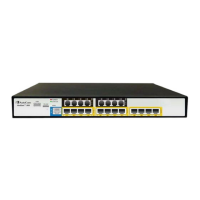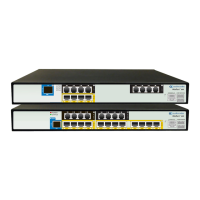User's Manual 988 Document #: LTRT-89730
Mediant 3000
Parameter Description
[EnableISDNTunnelingTe
l2IP]
[1] Using Header = Enable ISDN Tunneling from ISDN PRI to SIP
using a proprietary SIP header.
[2] Using Body = Enable ISDN Tunneling from ISDN PRI to SIP using
a dedicated message body.
When ISDN Tunneling is enabled, the device sends all ISDN PRI
messages using the correlated SIP messages. The ISDN Setup message
is tunneled using SIP INVITE, all mid-call messages are tunneled using
SIP INFO, and ISDN Disconnect/Release message is tunneled using SIP
BYE messages. The raw data from the ISDN is inserted into a proprietary
SIP header (X-ISDNTunnelingInfo) or a dedicated message body
(application/isdn) in the SIP messages.
Notes:
For this feature to function, you must set the parameter
ISDNDuplicateQ931BuffMode to 128 (i.e., duplicate all messages).
ISDN tunneling is applicable for all ISDN variants as well as QSIG.
Enable ISDN Tunneling
IP to Tel
[EnableISDNTunnelingIP
2Tel]
Enables ISDN Tunneling for IP-to-Tel calls.
[0] Disable (default)
[1] Enable ISDN Tunneling from IP to ISDN
When ISDN Tunneling is enabled, the device extracts raw data received
in the proprietary SIP header, x-isdntunnelinginfo, or a dedicated
message body (application/isdn) in the SIP message and then sends the
data in an ISDN message to the PSTN.
If the raw data in this SIP header is suffixed with the string "ADDE", then
the raw data is extracted and added as Informational Elements (IE) in the
outgoing Q.931 message. The tunneling of the x-isdntunnelinginfo SIP
header with IEs is converted from INVITE, 180, and 200 OK SIP
messages to Q.931 SETUP, ALERT, and CONNECT respectively.
For example, if the following SIP header is received,
x-isdntunnelinginfo: ADDE1C269FAA 06
800100820100A10F020136 0201F0A00702010102021F69
then it is added as an IE to the outgoing Q.931 message as 1C269FAA
06 800100820100A10F020136 0201F0A00702010102021F69, where, for
example, "1C269F" is a 26 byte length Facility IE.
Note: The feature is similar to that of the AddIEinSetup parameter. If both
parameters are configured, the AddIEinSetup parameter is ignored.
Enable QSIG Tunneling
[EnableQSIGTunneling]
Global parameter that enables QSIG tunneling-over-SIP for all calls. You
can also configure this functionality per specific calls, using IP Profiles
(IpProfile_EnableQSIGTunneling). For a detailed description of the
parameter and for configuring this functionality in the IP Profile table, see
''Configuring IP Profiles'' on page 391.
Note:
If this functionality is configured for a specific IP Profile, the settings
of this global parameter is ignored for calls associated with the IP Profile.
[QSIGTunnelingMode] Defines the format of encapsulated QSIG message data in the SIP
message MIME body.
[0] = (Default) ASCII presentation of Q.931 QSIG message.
[1] = Binary encoding of Q.931 QSIG message (according to ECMA-
355, RFC 3204, and RFC 2025).
Note: The parameter is applicable only if the QSIG Tunneling feature is
enabled (using the EnableQSIGTunneling parameter).
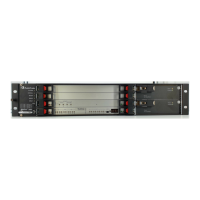
